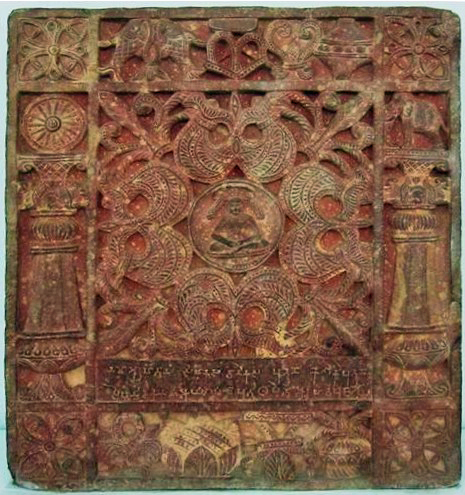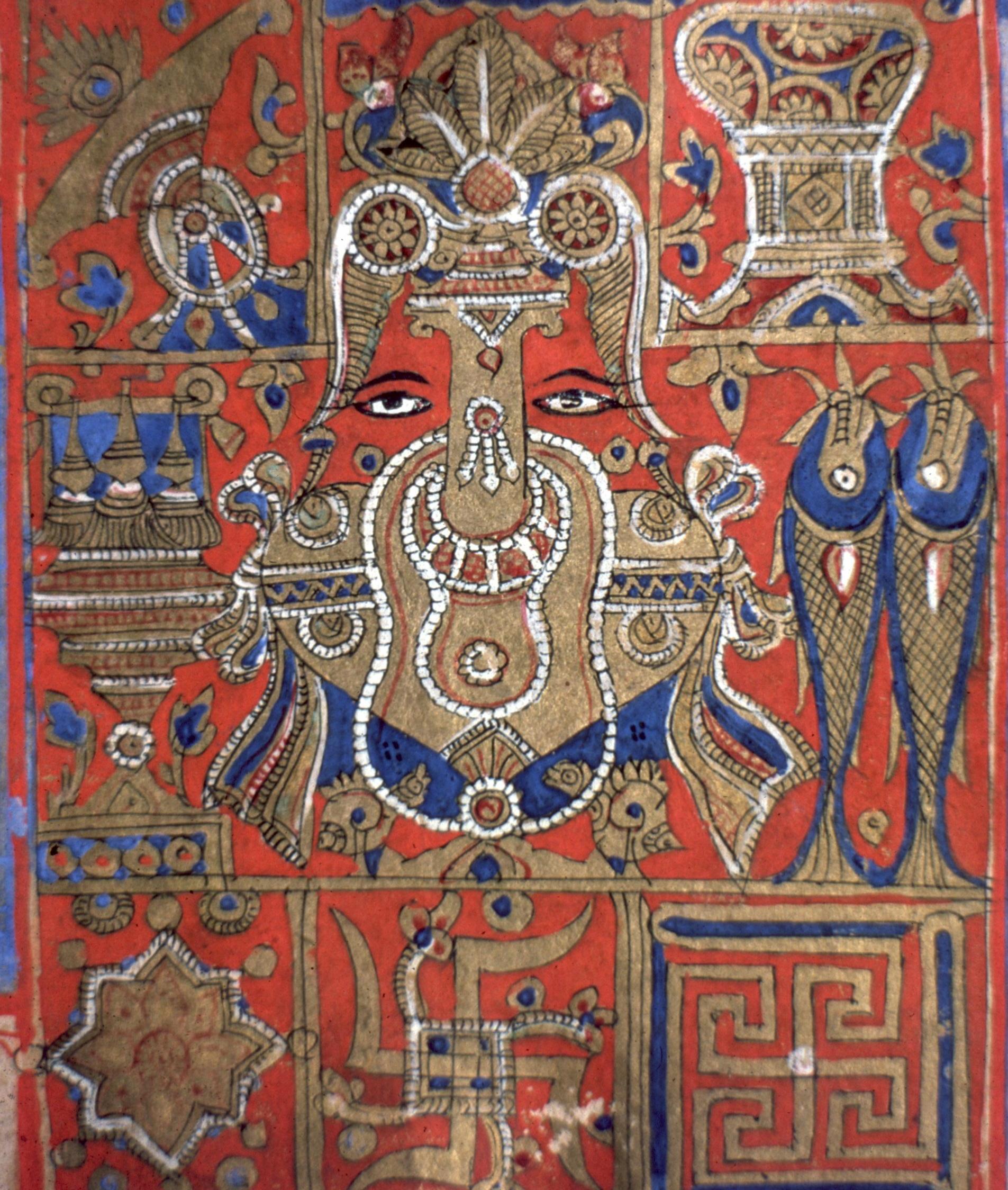Belief in auspicious objects has existed in many cultures from ancient time. This belief is an integral part of the ethos in India and is encountered in all the religions: Hinduism, Jainism and Buddhism.
The Sanskrit term mangala denotes the auspicious character of an object. The definition of the word mangala is wide ranging: it can mean free of impurities, or capable of conferring comfort and happiness. In addition to these qualities, implicit in term mangala, is that which can overcome all obstacles. In that capacity, the word off all malevolent forces.
The word mangala, thus, has a dual meaning. It possess the qualities of sacredness and purity as also the power of removing hindrance and thereby providing protection.
A number of objects have been considered auspicious in India. The generally accepted list of one hundred and eight includes symbols such as the swastika, purna-kalasha (full vase), darpana (mirror) and Kenya (maiden). Many of these objects and symbols can be traced to fertility rites and are derived from cults connected with animistic worship. Some represent the sublimation of the qualities possessed by the from that the objects appear to approximate, as for example, the full vase which symbolizes a pregnant woman, and by implication, a womb that can sustain life.
 |
Ashtamangalas on an Ayagapatta (Mathura, Kushan period) |
It is not surprising to find that the same, for example the swastika, has different meaning in different cultures. But, interestingly, within a culture, its symbolism often differs from one religious group to another, as each interprets it to suit its own requirements. For instance, the swastika has been suggested as denoting the sun because as soon as the sun rises, the four directions become visible. Vaishnative Hindus recognize in the swastika the wheel of Vishnu with two spokes and a rim, while the Jain equate it with the representation of the four classes of beings that a soul can be born into - celestial, human, plant or animal, and infernal. The sin of the swastika is also reverence. The meaning continues unchanged in postures of Indian dance. Actually the, symbol can traced to the Indus Valley seals made more than 5000 years ago and primitive cultures equate the symbol of embracing serpents (one lying on the other) with the creation of the cosmos.
Indian epics and stories often mention auspicious objects. The Mahabharata describes Arjuna paying obeisance to various auspicious objects including maidens before departing for the big battle. Other reference state that kings and chieftains wore necklaces strung with pendants representing auspicious objects when going on a hunting expedition or to fight a war. The necklaces acted as a charm, and shielded the wearer from danger.
It became customary to use eight of the one hundred and eight auspicious objects during rituals. The set of eight auspicious objects, collectively called the ashtamangala are represented singly or in a group at various social and religious occasions. Though the list of eight objects is codified among all religious groups, variation o occur, as one is replaced by some other from the long lists of universally recognized auspicious objects.
The concept of a set of eight auspicious objects has prevailed among the Jains from the early centuries of the Christian Era. Both the Shvetambara and Digambara sect recognized them, though each sect has its own version of the ashtamangala.
 |
Ashtamangalas in an illustrated Manuscript (Gujarat, c. 15th century) |
According to the Shvetambara sect of Jains the following objects constitute the ashtamangala:
- purna-kalasha (full vase)
- darpana (mirrior)
- bhadrasana (throne)
- vardhamanaka (powder flask)
- shrivatsa (a rhomboid mark)
- svastika (four armed cross)
- nandyavarta (nine pointed diagram)
- mina-yugala (pair of fish)
For the Digambara sect of Jains, the ashtamangla are as follows:
- bhringara (vessel)
- tala (fan)
- purna-kalasha (full vase)
- dhyaja (banner)
- suparatishtha (seat)
- chhatra (parasol)
- darpana (mirror)
- chamara (fly-whisk)
These eight auspicious symbols are worshipped during religious ceremonies. They are encountered everywhere - in painted or sculpted panels, on temples walls, as painting in illustrated manuscripts or on manuscripts cover (potlis),in carving on objects in temples such as platters, donations boxes, and low stools (baroths) used for placing offering to deities, as well as embroidered on patos (cover of the handle of a monk's broom). In Digambara Jain temples of southern India, individually fashioned metal images of the ashtamangala are placed in front of the Tirthankara in the sanctum-sanctorum of the temple.
Of them all, the purna-kalasha is the most familiar to people, for it is seen on the entrances of homes, invitation cards for ceremonies such as laying the foundation stone of a building, or even a wedding.
Wherever, they occur and whatever their form, the ashtamangla singly or collectively are believed to increase auspiciousness and avert calamity.